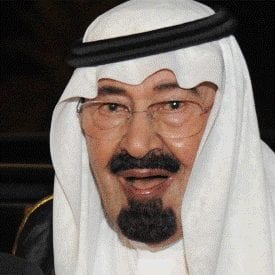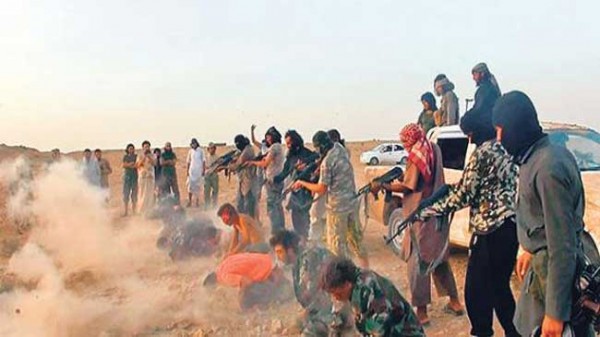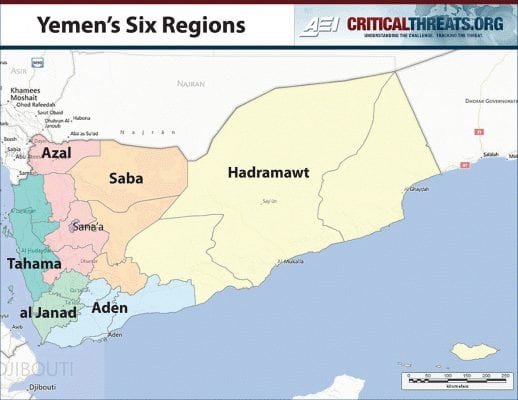A Royal shame: Abdullah leaves a legacy of regional militancy
ANDREW KORYBKO

Abdullah in recent years. Rarely have the eulogies been more hypocritical or misplaced. (Credit: Oriental Review)
[dropcap]King Abdullah[/dropcap] is being eulogized in the most unrealistic ways possible, from CNN designating him as a “reformer” to Chuck Hagel calling him “a powerful voice for tolerance, moderation and peace — in the Islamic world and across the globe.” Israeli President Reuven Rivlin takes the cake, however, by proclaiming that “his smart policy contributed greatly to Middle East stability.”
None of these characterizations are true in any way, as Abdullah’s main legacy isn’t one of reform, tolerance, and regional stability, but of destruction, hate, and regional instability. Every contemporary Mideast problem except for the Israel-Palestine issue can be directly traced back to the deceased despot, and in the wake of his death, it’s worth revisiting the legacy of regional chaos that he leaves behind.
The Method Behind The Madness
Before highlighting the chaos that Abdullah unleashed all across the Mideast, it’s necessary to explore the three primary reasons why he decided to do this in the first place:
Ideological Proselytization:
Abdullah saw a valuable opportunity to promote his Kingdom’s extreme perversion of Islam, the terrorist ideology of Wahhabism, in the aftermath of the US’ War on Iraq in 2003. Although not officially the King until 2005, he had ruled as regent for nearly a decade prior, thereby meaning that Abdullah’s vision was set into motion around the mid-1990s. This gave him the much-needed time to hone Wahhabist institutions and individuals for more effective destabilizing export abroad, which is precisely what began to happen when terrorists took over the anti-US resistance movement in Iraq. The extreme elements that hijacked the movement started focusing more on inciting a sectarian war(previously dormant for centuries) than on battling the American occupiers, which is exactly what Saudi Arabia wanted as part of its pan-regional grand strategy.
The US is Saudi Arabia’s chief ally, hence why Riyadh had an interest in deflecting attacks against its occupation forces and back toward the resistance itself. However, a more sinister strategy was also at play here, and that was the creation of the so-called ‘Sunni-Shia rivalry’ as a weaponized ideological force against Iran. The Saudis identify the Islamic Republic as being their eternal enemy, and although this was never an objectively foregone conclusion, what is important to emphasize here is that Saudi decision makers hold this mistaken belief and accordingly shape their foreign policy around it.
They have a paranoid idea that majority-Shia Iran wants to harness its influence among its related believers to exert political influence wherever they reside, including in Saudi Arabia’s oil-rich Eastern Province. Thus, Abdullah figured that the Saudis could ‘strike first’ by manufacturing an artificial ‘Sunni-Shia rivalry’ in order to ‘justify’ repressions against the Shia in Saudi Arabia and prevent them from attaining power as ‘Iranian proxies’ in Iraq and Bahrain sometime in the future. In countries such as Yemen and Syria where Shia and Shia-affiliated sects constitute an influential minority, the policy was aimed at inciting religious hatred against them in the hopes that they could be eventually relegated to social and political obscurity. Abdullah’s plan was obviously long-term, but given the intensity of the sectarian war that he launched in Iraq and the lessons his intelligence forces gleaned from such activity, his was able to see demonstrable ‘results’ a couple years later after the ‘Arab Spring’ Color Revolutions. Wahhabism flared throughout the Mideast and Shia communities everywhere found themselves in fear of violent sectarian-led attacks. For the Saudis, this was mission accomplished.
Institutional Expansionism:
The second driving force behind Abdullah’s reign of terror across the Mideast was to spread the influence of the Gulf Cooperation Council (GCC), a Saudi-led regional grouping that operates as a multifaceted integrational platform that coordinates military, political, and economic policies. Abdullah’s ambition was to use it as a vehicle for creating regional satellite states, either formally integrated into the organization (such as Bahrain) or living under its military shadow (as it envisioned Yemen to be). Pertaining to Syria and Iraq, Abdullah sought to make them submissive to the GCC’s dictates, in that Syria was unsuccessfully bullied into allowing a gas pipeline to transit its territory (and its subsequent refusal is credited with initiating the war) and Iraq was targeted for trilateral fragmentation so that it could never rival the Saudis again.
Lead From Behind:

A ridiculously underdeveloped nation in terms of technology and actual manufacturing, except for its oil infrastructure, Saudi Arabia apes its chief mentor in almost everything concerning war making. Here a view of their war room. (Oriental Review)
Finally, the US understood the regional value that Abdullah’s goals could have for its global grand strategy, and therefore threw all of its weight behind his destabilizing activities. The American vision for adapting to the multipolar world is to delegate zones of regional responsibility to its close allies (or group thereof), and Saudi Arabia is the Lead From Behind partner for the Gulf. The US wants to use the Saudis and their GCC minions as military proxies for any future conflict with Iran, hence why it and its NATO allies are arming them to the teeth. The US seems to have also fallen for Abdullah’s scam of the ‘Sunni-Shia rivalry’ and his paranoid fears of Iranian interference via this ‘mechanism’, which explains its blind support for the dead ruler’s actions in Syria, Iraq, Bahrain, and Yemen. Instead of the US directly confronting Iran, it simply outsources this responsibility to Saudi Arabia and the GCC, which share the same delusional belief as the US and Israel have about a hidden Iranian hand guiding all sorts of Mideast mischief.
Abdullah’s Hit List
While the story of Pandora’s Box may only be a legend, Abdullah’s Mideast application of it is most certainly not. The former King opened the gates of hell when he unleashed his sectarian war on the masses in an attempt to transform his country into the region’s unrivaled hegemon. Thus, the following should be read as Abdullah’s ‘hit list’:
Syria:
Abdullah took personal offense to President Assad’s refusal to betray his Iranian allies and kowtow to the Gulf Monarchies, and thus targeted him for elimination. Of course, the US was also planning President Assad’s removal even before then, but this gave Abdullah an even greater reason to work with them to bring his sectarian plans into play in the Levant. He had intended for Syria to be a peripheral satellite of the GCC, but President Assad’s loyalty to his Iranian partners frightened the King and brought about hallucinations of a ‘Shia alliance’ aimed against his country’s interests. Abdullah wasn’t apt enough to identify it for what it properly was – the Axis of Resistance – but instead, given his fixation with Iran, he only saw a sectarian element to it that he became obsessed with destroying. Since Iraq stood between the two and happened to be run by Maliki (a Shiite) at the time, the Saudis instinctively began plans for sucking them into the oncoming destabilization by restarting the sectarian civil war that previously devastated the country.
Iraq:

Saudi/NATO-created ISIL gangsters and fanatics murder Syrian troops in cold blood. (Oriental Review)
For a while, it seemed like Iraq would successfully resist the Saudi-inspired destabilization that was ravaging Syria, since Maliki’s strong arm kept everything together between his country’s Sunni and Shia citizens. However, that was not to last, as ISIL began its massive surgeacross the Syrian border and into Iraq last summer, whereby it acquired unimaginable territorial conquests in an extremely short period of time. This was the final aspect of Abdullah’s northern-directed foreign policy, since he ultimately succeeded in having the Wahhabist militants destabilize Iraq and reignite the sectarian war, which in turn led to Maliki’s soft-coup removal from power and the country’s de-facto fragmentation into three identity-dominated entities.
Bahrain:
This small island country was actually Abdullah’s first geopolitical victim, since he ordered the Saudi military to intervene there upon the urgent request of its monarchy. The Shiite majority had been rising up against the Sunni-minority royals and demanding democratic representation and more rights, in a scenario that Abdullah could not refrain from viewing in sectarian (read: ‘Iranian conspiracy’) terms. Nonetheless, Abdullah wasn’t successful in putting down the people’s resistance to their rulers (despite dozens of deaths and hundreds of torture allegations), which still continues to this day amidst an ever-stringent crackdown on the opposition.
Yemen:
Finally, Saudi Arabia’s southern neighbor wasn’t spared from Abdullah’s militant ambitions, although it experienced them in a different way. Given that Yemen is the geopolitical Achilles’ heel of the Kingdom, large-scale destabilization there poses the high risk of spilling over the border and boomeranging back into Saudi Arabia, hence Abdullah’s reluctance for all-out conflict there on par with Syria. Also, the government there was favorably affiliated with the Saudis and comfortably kept under their thumb. However, Abdullah’s obsession over sectarianism meant that he continued to view the Shiite Houthis in the north as proxy agents of Iranian influence, and he was paranoid that if they were able to create a more inclusive and democratic government, then Saudi Arabia might be left with a hostile state on its borders.
When the Houthis rebelled against President Hadi’s GCC-approved plan to arbitrarily federalize the country into six units and dilute their already miniscule representation, the government was forced to concede to a UN-mediated power-sharing agreement. The thing is, that was all just a time-buying ploy, whereby the Saudis sought to retain their man in Sanaa while finding a way to slowly destroy the Houthis. When they finally ordered Hadi to backtrack on the agreement and carry out a pro-Saudi coup, everything disastrously fell to pieces and Riyadh’s agent in Yemen stepped down from the presidency. This left the Houthis as the only real political force still active in the country, which in turn exacerbated Saudi Arabia’s fears of an Iranian conspiracy. Yemen is now on the cusp of a greater conflict, as the Kingdom, convinced of a hidden Iranian hand behind its monstrously failed coup attempt, desperately contemplates its next power move along its vulnerable and exposed southern border.
Bonus – The Hitman:
Last but not least, Abdullah, following the template of his American advisors, also sought to outsource some of his country’s regional activity to a degree, ergo the creation of ISIL. Although they deny it, the Saudis created it and were absolutely instrumental in helping the world’s most dangerous terrorist organization come to power. So important has ISIL been to achieving Saudi objectives in Syria and Iraq that it can even be said to function as the ‘hitman’ taking out the members of Abdullah’s ‘hit list’. However, just like with any mercenary gunman, the Wahhbist Frankenstein might finally be turning on its masters, which would present an ironic twist of fate for Abdullah’s lasting legacy.
Concluding Thoughts
As the mainstream media shamelessly ‘mourns’ Abdullah’s passing, millions of his victims across the Mideast are celebrating the death of what they rightfully view to have been the world’s number one terrorist. Never before in modern times has one man had such a wide-ranging effect of death and destruction across the region. Bush’s War on Iraq may have been indirectly responsible for ending the lives of between half a million to one million Iraqis, but one needs to be reminded that most of the violent deaths that occurred weren’t perpetrated by Americans (although that definitely doesn’t excuse them), but by anti-government/occupation forces and ‘unknown actors’ (read: Saudi-supported sectarian terrorists).
The salient point is that Abdullah’s brainchild, the artificial ‘Sunni-Shia rivalry’, cooked up in order to advance his Kingdom’s Wahhabism, spread the GCC’s power, and (as he saw it) supposedly contain and rollback Iran, has resulted in countless deaths that the mainstream media never attributed to him, to say nothing of the hundreds of thousands of casualties and millions of displaced people due to the Saudi-sponsored War on Syria. This weaponized ideology doesn’t seem set to stop killing for quite some time (if at all), and since it has already proven the capability to outlive its creator, it should deservedly be attributed as Abdullah’s actual legacy.
Andrew Korybko serves as a political analyst and journalist with Sputnik, and currently lives and studies in Moscow. This article was originally posted on ORIENTAL REVIEW.
What is $1 a month to support one of the greatest publications on the Left?

